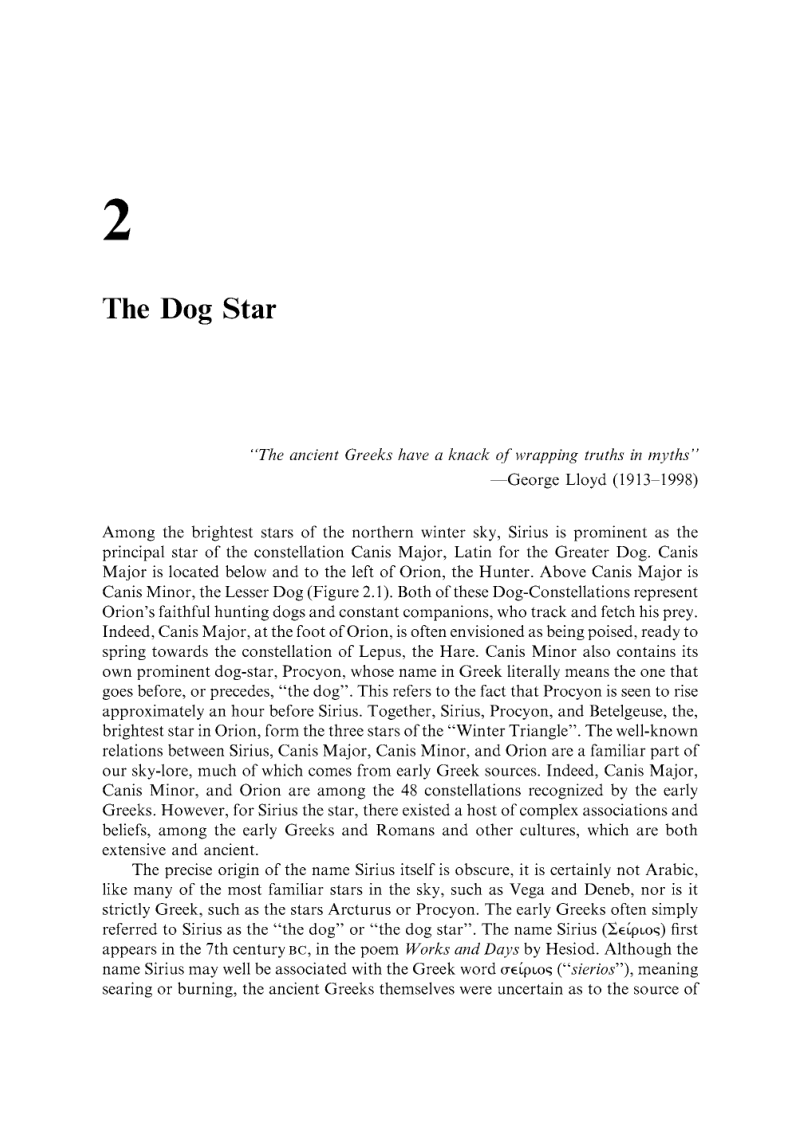Jay B. Holberg reviews ancient sources that identify Sirius as the dog star.
- Type
- Book
- Source
- Jay B. Holberg Non-LDS
- Hearsay
- DirectSecondary
- Reference
Jay B. Holberg, Sirius: Brightest Diamond in the Night Sky (Berlin: Springer, 2007), 15–26
- Scribe/Publisher
- Springer
- People
- Jay B. Holberg
- Audience
- Reading Public
- Transcription
Among the brightest stars of the northern winter sky, Sirius is prominent as the principal star of the constellation Canis Major, Latin for the Greater Dog. Canis Major is located below and to the left of Orion, the Hunter. Above Canis Major is Canis Minor, the Lesser Dog (Figure 2.1). Both of these Dog-Constellations represent Orion's faithful hunting dogs and constant companions, who track and fetch his prey. Indeed, Canis Major, at the foot of Orion, is often envisioned as being poised, ready to spring towards the constellation of Lepus, the Hare. Canis Minor also contains its own prominent dog-star, Procyon, whose name in Greek literally means the one that goes before, or precedes, "the dog". This refers to the fact that Procyon is seen to rise approximately an hour before Sirius. Together, Sirius, Procyon, and Betelgeuse, the, brightest star in Orion, form the three stars of the "Winter Triangle". The well-known relations between Sirius, Canis Major, Canis Minor, and Orion are a familiar part of our sky-lore, much of which comes from early Greek sources. Indeed, Canis Major, Canis Minor, and Orion are among the 48 constellations recognized by the early Greeks. However, for Sirius the star, there existed a host of complex associations and beliefs, among the early Greeks and Romans and other cultures, which are both extensive and ancient.
- Citations in Mormonr Qnas
The B. H. Roberts Foundation is not owned by, operated by, or affiliated with the Church of Jesus Christ of Latter-day Saints.

